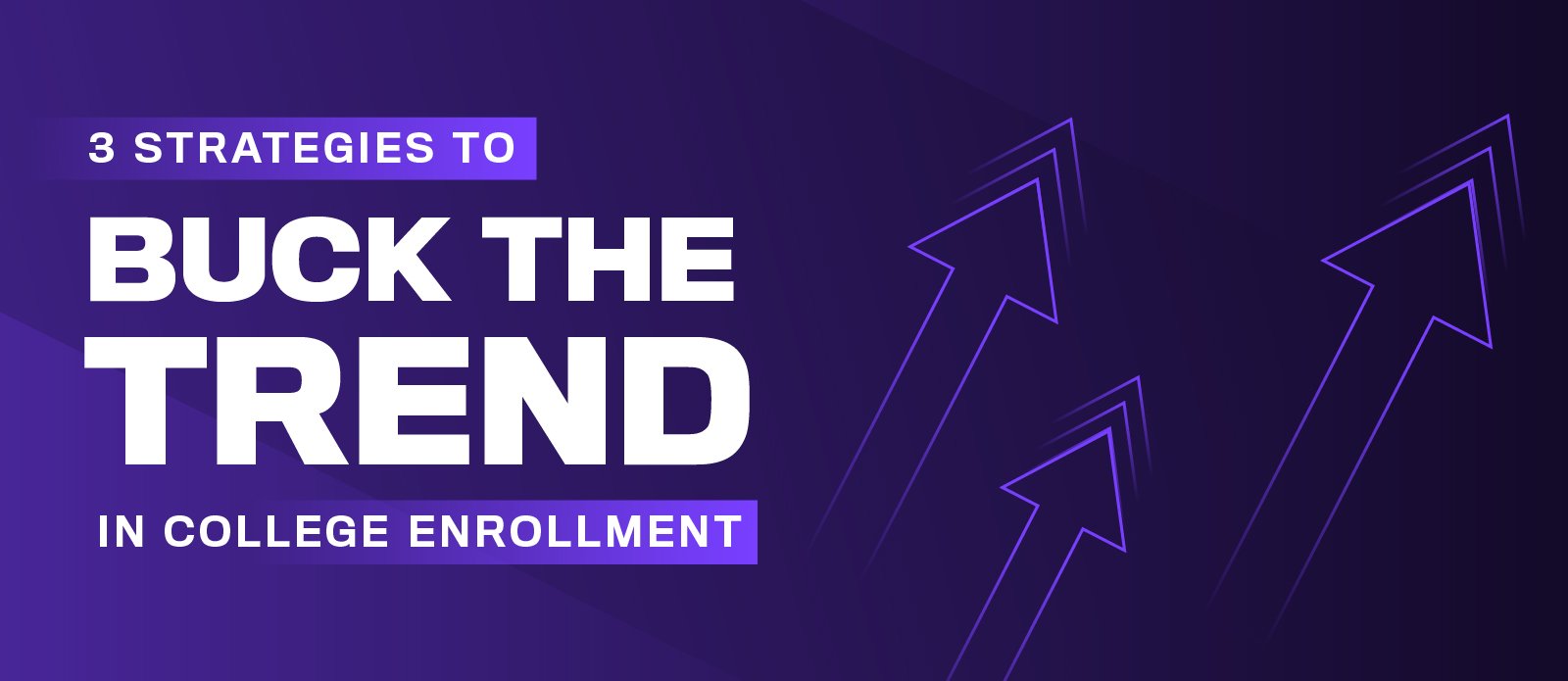
College and university leaders recently received more bad news about student enrollment. According to preliminary data from the National Student Clearinghouse Research Center, there are 6.5% fewer undergraduate students today than there were in 2019.
If the numbers hold up, it will be the largest two-year decline in 50 years. Even more, public confidence in higher education is plummeting for college-aged Americans. Only 41% of 18- to 29-year-olds consider college “very important.,” according to a Gallup Poll.
But there are scores of colleges and universities that are bucking the trend in declining enrollment, and they are not just Ivy League institutions. Small liberal arts colleges, including Lewis and Clark College in Portland, Oregon, and even larger state schools such as Cal State Fullerton and the University of Maine have increased student enrollment during the COVID-19 pandemic. At UNINCORPORATED, we believe your school can become an enrollment success story, too.
Let's assume you already have an admissions website that converts visitors to students, your college recruiters have articulated the case for college, and leadership understands their school’s brand story.
So, what’s next? We have some ideas.
Embrace Targeted Marketing
No one school has the same kind of students. In each community, there could be rural students, first-generation students, BIPOC students, high-achieving students, and more. And they may have a different reason for wanting to attend your college or university. Yet, many schools keep their cookie-cutter, mass-marketing approach to student recruitment. Schools such as Isothermal Community College and Butler University credit targeted marketing campaigns for boosting their student enrollment numbers during the pandemic, and we understand why.
Targeted marketing uses data and insights from current and potential students to identify customers and break them down into populations based on interests, geography, or grade point averages. Then, messaging that will resonate with this group is crafted and pushed out on a variety of mediums, including social media ads, Google ads, email marketing, radio ads, and more.
Become an Early Adopter
Each day 2.81 billion people worldwide access Facebook, Instagram, and WhatsApp. On Twitter, there are 211 million daily active users (those who see ads while on Twitter). That is a lot of people, a lot of accounts, and a lot of noise. Making inroads with prospective students on social media can be challenging, especially if you have a limited advertising budget. Colleges and universities have an opportunity to stand out by becoming early adopters of new social media channels.
Like what you're reading? Sign up for the Higher Education News Brief, and receive the top stories from across the landscape of Higher Education every Monday.
Approximately 25% of TikTok users are tomorrow’s college students, specifically 10- to 19-year-olds. Gen Z loves the app, yet many universities lack a presence in that space. This is unfortunate considering that 25% of users are tomorrow's college students, and 90% of those individuals open the app several times a day. Neither Harvard University, Duke University, nor UC Berkeley has TikTok accounts, and an informal tally shows that the number of colleges on TikTok is not that high.
Cape Fear Community College in North Carolina has 12,687 students and a TikTok following of 19,100 users. Its account is admissions focused with videos that show lucrative types of trades jobs, dispels myths about community college, and share stories of students transferring to their dream schools and graduating with no debt. It has a greater number of followers on TikTok than Instagram. Austin Peay State University in Tennessee has almost 11,000 students and nearly 5,000 followers on TikTok. The account also went all-in with a student recruitment strategy by featuring campus tour videos, as well as snippets about why and how to apply for admission.
Chasing and predicting the next big social media channel takes some work, and not every social media outlet survives. Remember Vine and Google+? If you want a safer bet, try becoming an early adopter of new features on established social media channels. When Instagram Reels and Facebook Stories debuted, the company changed the algorithms so that those who use the latest tools received more exposure, which led to higher engagement, views, and clicks.
Make Friends with a Chatbot
Chatbots are artificially intelligent-powered tools that send automated messages to answer common questions. When we took a deep dive into chatbots for the Higher Ed Happy Hour podcast, we learned that these pre-scripted messages can be sent at all hours of the day and free up staff time. Text message-based chatbots also remind students about important dates and deadlines. They have fun names like Pounce, CSunny, and Ekhobot, and they entered the spotlight when the pandemic closed campuses. Soon chatbots, with their jokes and words of encouragement, were fostering meaningful connections for students engaged in online learning.
Before the pandemic, however, chatbots were used by some forward-thinking schools to increase college student retention and stave off "summer melt". A pilot study from Georgia State University used a chatbot to help students complete important enrollment tasks such as sending transcripts and attending orientation. At the end of the study, summer melt decreased by 21.4%, and enrollment increased by 3.3%.
Now is the time to leverage chatbots for innovative student recruitment strategies. It is easy to imagine text-based chatbots following up with students after a college tour or after a recruiting fair and helping them schedule an appointment with an admissions counselor. Or maybe chatbots could connect prospective students to “real life” student ambassadors who share common majors or interests. Even better, text-based chatbots meet students in the medium that works best for them. Colleges may love email marketing, but tomorrow’s students do not feel the same way. In fact, 75% of Gen Z prefers texting over calling and some even consider the formality of drafting an email akin to “social anxiety.”
Download your complimentary Brand Manifesto Workbook today!









